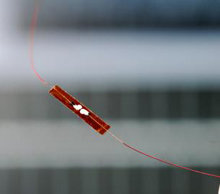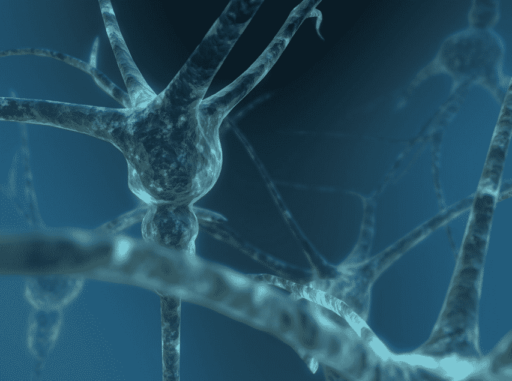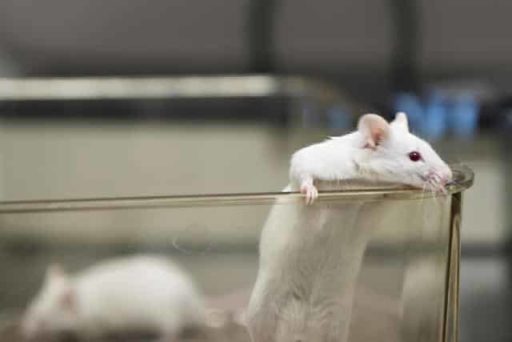Scientists at the Georgia Institute of Technology have placed nanowires inside rats that have successfully converted the animals breaths and heartbeats into electricity. These nanowire generators could one day lead to battery-free nano-scale medical implants and sensors powered by the body itself. The same GIT team proved five years ago that zinc oxide nanowires could produce electricity from a running hamster, for instance, or from tapping fingers. The wires produce electricity when under mechanical stress, called the piezoelectric effect. But now, it’s been proven to work inside a living animal.
The GIT team was led by Zhong Lin Wang, a materials science and engineering professor. Researchers put a zinc oxide nanowire onto a flexible polymer and encapsulated it into a polymer casing to protect it from bodily fluids, Tech Review reports. When attached to the rat’s diaphragm, the animal’s breathing stretched the nanowire, and it generated a tiny amount of electricity — about four pico-amps of current at two millivolts. When it was attached to the rat’s heart, the nano-generator produced about 30 pico-amps at about three millivolts.
The rat generator operates at the femtowatt scale — a pico-amp is a million millionth of an amp, so it is a tiny amount of current — so not very much power. But the technology has potential to power nano-sized devices, Wang says in a paper on the results published in the journal Advanced Materials.
Wang’s team is already building on the rat findings, Tech Review reports. The team has a device that integrates hundreds of nanowires into an array, giving an output current of about 100 nano-amps at 1.2 volts. The next step is to connect the higher-powered nano-generator inside an animal, Wang says.
Source: Popular Science.






Pingback: Tweets that mention Scientists Develop Nanowires That Can Convert Heartbeats Into Electricity | TheTechJournal.com -- Topsy.com
If you're interested in the science behind the story, we've made the original paper freely available at http://www.materialsviews.com/details/news/7371….
Plus, there you can watch a video of the generator in action inside the animal.
-Dave
Editor, Advanced Materials